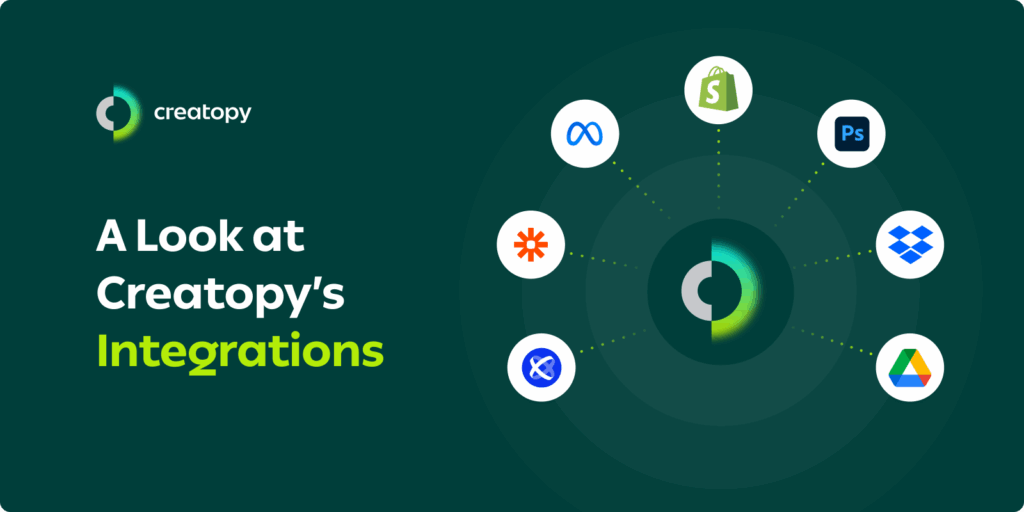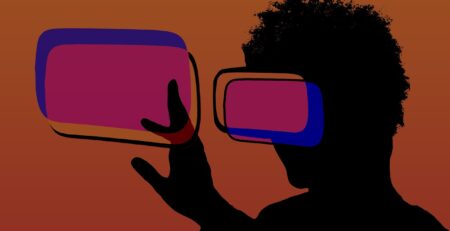Since the early 2000s, social media has become the zeitgeist of the 21st century. Almost everybody who is not part of an indigenous culture or cut off from the rest of the world has embraced social media culture.
If you’ve been around long enough, you’ve probably seen social media platforms come into fruition, evolve, and then eventually die out. The big three social media platforms that currently stand at the pinnacle of it all are Facebook, YouTube, Twitter, and Instagram.
These platforms have held their edge because they’re a place for people to share and express themselves. That’s what makes social media special. It’s a place where people can share their thoughts and feelings unfiltered and unadulterated through various mediums. But that begs the question: how did we get here? Social media most definitely didn’t start with Facebook, so let’s take a look at the social media platforms that have gotten this far.
Table of Contents
Evolution of Content Consumption
Before social media, before the internet even, people had been using various different means to communicate with one another over long distances. Whether it be through electronic dots and dashes or the humble telephone call, people will always find a way to commune with one another. If you think about it, today’s internet phrases like “OMG” and “LOL” can be traced back to the humble “SOS.”
However, the moment we went digital in the early 2000s, things changed completely. There was a huge paradigm shift in the way content, especially relating to the social aspect, was digested. Millennials and Gen Z flocked to this change in trend because, to them, the digital space was home.
What started as just MSN Messenger quickly transitioned into a cascade of websites, including the aforementioned Facebook, Twitter, and YouTube. Each equipped with their unique way of interacting with the world. On one hand, you had Facebook, which was the jack of all trades and the master of reminding people of their friends’ birthdays.
Then you have Twitter, which excels at allowing people to put their thoughts, art, and memes on the web in short little bursts. Then you had YouTube, which has allowed people to easily watch music videos relating to their favorite artists and long-form videos related to content creators.
The nature of smartphones and other portable devices only bolstered the explosion of social media platforms even more. Now you have constant access to your favorite services wherever you are and wherever you go. The evolution and growth of these platforms show a shift in the way we consume and interact with content. And to look at it further, let’s break it down from an accessibility perspective.
Accessibility and Reach
Social media applications have enhanced the reach of both people and companies to one another. Before social media, communication was a very local or regional thing. There was no real way to step beyond the geographical boundaries that bound us to the borders we lived within. If an advertiser wanted to advertise anything, they had to make sure their content was made for the very specific region it was being broadcast in.
However, social media blew everything up. No longer are people bound to geographical limitations from which to speak to one another. They can transcend these limitations and go beyond. Secondly, content stopped being provided only by corporations.
Social media started to create an influx of user-generated content as well. This influx of content created a new kind of audience that craved relatability and down-to-earth people over the typical corporate feed and high-class celebrities usually on broadcast.
In fact, with the vitality of content and the way things unfold across social media, anyone can turn into an overnight celebrity. This, in turn, has catalyzed a larger social movement on behalf of many people across the globe, as the impact of social media is of global importance.
Keep in mind that all of these happenings are also being done in real time. It’s not the Middle Ages anymore, where it takes months for a message to travel from one place to another. If something is happening in a moment in one area, it’s happening at the same time everywhere else.
Personalization and User Engagement
At the core of all social media is the desire to leave one’s mark. In its way, social media is a form of creative expression if you think about it. Although not everyone is artistically inclined, the algorithm within these applications keeps tabs on the things they prefer.
The algorithms in question analyze what people watch, frequent, or interact with. They then study the data, find patterns, and then recommend content of a similar kind to those people. Multiple factors are taken into consideration when it comes to the personalization of one’s feed. These factors can range from watch time to engagement (likes, comments, clicks, etc.). These are great ways for the algorithm to make sure that what you see is what you want to see.
These days, algorithms are a lot smarter than they ever have been. Using new technologies such as AI and machine learning, they’re able to constantly adapt. This is important to take note of because it highlights how much quicker the pace of interactions has become. It also ensures that users aren’t kept wanting for something new and are constantly coming back for diverse content.
To add to this, social media has started offering swathes of opportunities for users to engage further. We went from likes, comments, and shares to interactive quizzes, livestreams, and interactive stories.
And then you get the most pivotal aspect of social media: user-generated content. Whether it be putting your raw, unfiltered thought bubbles out there as tweets or engaging in user-generated challenges. User-generated content is highly important because it fosters a sense of community and belonging. And these digital communes manifest in the form of virtual communities.
Virtual Community
One of the hardest things to do growing up was finding people who related to your hyper-specific interests. For example, back in the early 2000s, before social media was a thing, liking anime wasn’t mainstream. It was quite the opposite. You’d get bullied for liking anime. Most people wouldn’t even call it anime; they’d call it cartoons. In this day and age, you’d get destroyed on the internet for saying that.
So why do I bring this up? Because virtual communities and social media changed everything. Niche interests were no longer niche. If you liked something, you were bound to find a community for it online. And the broader the scope of the shared interest, the wider the community. And the more people that got caught up in the community, the wider the net they would cast. Virtual communities turned being an anime fan from something to be bullied for at school to something you could use to easily make friends.
The way people personalize their profiles and the general algorithm also shot up this trend quite a fair bit. Nobody had to look for their favorite things in a specific aisle anymore. Everything would get recommended to them in the same place, in real time. This way, communities could grow and evolve more efficiently. Now, you didn’t just have broad communities; you had sub-communities within them for specific things as well. However, with this propagation of communities, you had people who became so-called “leading thinkers” in the space. These people some would vouch for as leaders of these communities. In modern media lingo, however, most would refer to such individuals as “social media influencers.”
Influencer Culture
With the rise of social media, a new type of celebrity has emerged, commonly known as an influencer. These people have pockets of audiences that flock to their content. The type of content that influencers work off of is quite specific to their interests and personality.
Because of this type of, for lack of a better word, influence. Influencers have been able to market themselves as the product to their audience. This has allowed them to market items with their name on them to a wide variety of people. Just look at the virality and success of someone like Mr. Beast. Mr. Beast not only hit the jackpot when it comes to success. He also used it as a means to catapult himself into the business sphere, making his line of chocolates and other related products.
And where there’s an opportunity for business success, companies and brands will follow suit. Of course, when you’re a corporation, there’s no real face you can give yourself aside from that of a mascot. The thing about mascots, though, is that they can’t function as influencers. Influencers, despite what many people may argue, are still normal people. A good chunk of their brand is their own personality mixed in with a bit of spontaneity. So instead of using their own brand to market, companies have found other methods.
The main method you will notice is obviously brand sponsorships and deals. If you watch a YouTube video these days, you’ll notice that a good chunk of the time, the mid-roll ad will be something the influencer themselves is marketing at you. It’s a great way for the company to gain exposure and for the influencer to earn some money. Of course, the success of all of this is highly dependent on the integrity of the influencers themselves and their target audience.
Of course, platform holders have also started to take a cut of the pie. Now we have active monetization features on most platforms, allowing influencers to take what they do and turn it into a full-time job. It’s become a hodgepodge of competition between brands, influencers, and the platforms themselves to see who can hold the audience’s attention the longest.
Social Commerce
Social commerce has emerged as a powerful intersection of social media and e-commerce, enabling brands to sell products directly within social media platforms, thereby reducing friction in the path to purchase and capitalizing on impulse buying behavior.
Platforms like Instagram, Facebook, Pinterest, and Snapchat have introduced features such as shoppable posts, product tagging, and in-app checkout. This allows users to discover, browse, and purchase products without leaving the platform.
Influencers play a pivotal role in driving social commerce by showcasing products in authentic, aspirational contexts and providing personalized recommendations to their followers.
Through affiliate marketing programs and commission-based partnerships, influencers earn a commission on sales generated through their referral links. It incentivizes them to promote products that align with their brand and audience.
Influencer culture and social commerce have become integral components of the social media ecosystem, driving brand engagement, consumer behavior, and revenue generation. By leveraging the influence of individuals, brands can tap into highly engaged audiences, foster authentic connections, and drive tangible business outcomes in an increasingly competitive digital landscape.
Diversification of Content Formats
The diversification of content formats on social media platforms reflects the evolving preferences and behaviors of users as platforms adapt to accommodate a wide range of content types to cater to diverse audience demographics and engagement preferences.

Social media platforms have evolved beyond text-based communication to embrace a diverse array of multimedia content formats, including images, videos, GIFs, and live streams. The rise of smartphones with advanced camera capabilities and high-speed internet connectivity has democratized content creation, enabling users to produce and share visually compelling multimedia content effortlessly.
Multimedia content enhances user engagement by appealing to multiple senses and capturing attention more effectively than text alone. Platforms like Instagram, Snapchat, and TikTok have capitalized on the popularity of visual content formats, offering users intuitive tools and features to create, edit, and share visually stunning content that resonates with their audience.
Social media platforms accommodate a spectrum of content lengths, ranging from bite-sized short-form content to long-form articles and videos. Short-form content, characterized by its brevity and simplicity, is ideal for capturing attention quickly and catering to users’ short attention spans. Platforms like Twitter, Vine (now defunct), and TikTok have popularized short-form content formats, such as tweets, vines, and short videos, which are optimized for rapid consumption and sharing.
Conversely, long-form content provides an opportunity for in-depth exploration of complex topics, narratives, and ideas. Platforms like YouTube, Facebook, and Medium have embraced long-form content formats, such as videos, articles, and blog posts, which allow creators to delve into topics with greater depth and nuance, catering to audiences seeking more substantive content experiences.
Storytelling and Branding
Social media platforms have become fertile ground for storytelling and branding, as brands and content creators leverage narrative techniques to engage and captivate audiences. Storytelling humanizes brands, fosters emotional connections, and communicates brand values and messages in a compelling and memorable way.
Platforms like Instagram Stories, Facebook Stories, and Snapchat have popularized ephemeral storytelling formats where content disappears after a certain period, creating a sense of urgency and exclusivity. Brands and influencers use storytelling techniques, such as sequential narratives, behind-the-scenes glimpses, and user-generated content, to create immersive brand experiences that resonate with audiences on a personal level.
The diversification of content formats on social media platforms reflects the dynamic nature of content consumption preferences as platforms adapt to accommodate a wide range of content types to engage and captivate audiences. By embracing multimedia content, short-form and long-form formats, and storytelling techniques, social media platforms empower users and brands to create compelling and immersive content experiences that resonate with audiences on a profound level.
From Likes to Leads
The trajectory of social media as the future of content is undeniable. From its roots in connecting individuals to its current status as a multifaceted platform, social media has reshaped the digital landscape.
Its democratization of content creation, personalized user experiences, and integration of influencer culture and social commerce have revolutionized how we consume and interact with content. As we navigate this dynamic realm where creativity meets connectivity, it’s evident that social media will continue to evolve, shaping the future of content in ways that transcend geographical boundaries, cultural divides, and technological limitations.
Elevate your brand’s digital presence today with EvolveDash’s expert social media marketing solutions and unlock your business’s full potential online.
FAQs
- How does social media impact SEO?
Social media indirectly affects SEO by driving traffic to your website, increasing engagement, and helping content get indexed faster. While social signals aren’t direct ranking factors, they boost visibility and brand awareness, which can lead to more backlinks.
- What are the biggest challenges businesses face with social media content?
The biggest challenge any business is going to face is the algorithm, alongside the desire to find a core audience. Unlike regular SEO, social media algorithms care about engagement and things that could go viral rather than consistent strategies that work out. So, keeping up with trends is highly important to getting by on social media.
- Will traditional content marketing become obsolete due to social media?
No, traditional content marketing will always be relevant to how companies advertise themselves. Social media marketing is more so a supplement to traditional marketing rather than a threat. A smart company will prioritize using both rather than one.
- How can businesses measure the success of their social media content?
If your business wants to measure its success, then the important metrics to look at to measure are engagement. There are different ways to measure said engagement, and it’s very much dependent on the social media platform on which you operate. However, a general rule of thumb is to look at the comments and likes you get on every post.
- What are the risks of relying too much on social media for content distribution?
The issue with social media platforms is that they’re highly dependent on relevance and culture. Social media platforms are in a constant influx of people shifting and finding their place in them. This logic applies to the constant influx of different audiences.



















